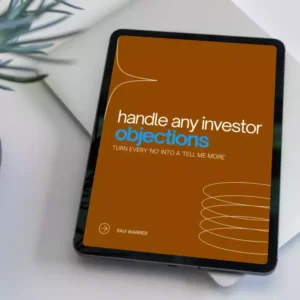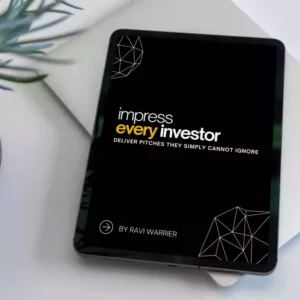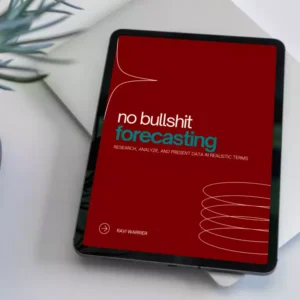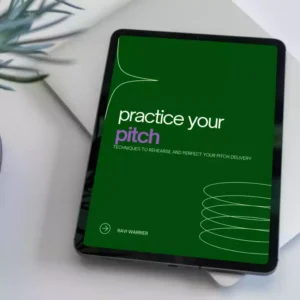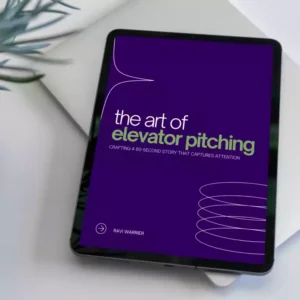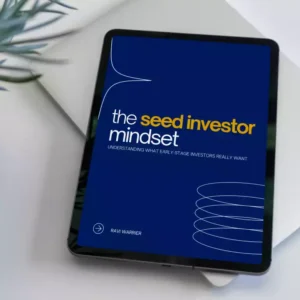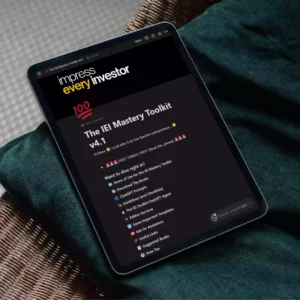TL;DR
When pitching to investors for the first time, avoid common mistakes such as pitching too early, having too many slides, being overly pushy, and skipping validations. Instead, tailor your message to the audience, keep it concise, and ensure your pitch aligns with the investor’s interest.
Avoid Pitching Too Early
One of the biggest mistakes you can make is presenting your pitch to prominent investors too early in your fundraising efforts. Think of pitching as a skill that improves with practice. Start by presenting to less-known investor groups first to build your confidence and refine your presentation skills. Aim to have 20-25 pitches under your belt before targeting “big fish” investors.
For instance, imagine you’ve developed a new app and are eager to pitch it to major venture capitalists. Instead of immediately scheduling a meeting with top-tier firms, consider presenting to local angel investors or smaller VC firms first. Each pitch will offer valuable feedback that you can use to polish your presentation and build your confidence.
The repetition helps you become more comfortable with answering questions and addressing concerns spontaneously. This experience will make you appear more professional and prepared when it’s time to pitch to your target investors.
Keep the Pitch Deck Short and Sweet
A common rookie mistake is stuffing your pitch deck with excessive information. While it may be tempting to include every detail about your startup, remember that your audience’s attention span is limited. Aim for 15-20 slides to keep your presentation focused and digestible. If you exceed this limit, you risk losing your audience’s interest.
Here’s a practical scenario: You have a startup that provides an innovative solution for renewable energy management. Instead of cramming your deck with statistics and technical jargon, highlight the main points—such as the problem, your solution, the market opportunity, and your team’s qualifications—across a concise set of slides.
By keeping it brief, you ensure that your key messages are clear and memorable. Leave the in-depth details for the Q&A session or supplemental materials that you can provide after the meeting.
Avoid Being Too Pushy
Investors are interested in your pitch for a reason—they see potential in your idea or business. However, being too aggressive or pushy can backfire. Allow the investors to guide the conversation and show interest naturally. Over-promotion can come off as desperate and may make investors question your confidence in your own product.
Consider a founder pitching a new health-tech device. Instead of bombarding the investors with constant reminders of how revolutionary the device is, focus on delivering a well-prepared, compelling pitch. Allow the investors the space to ask questions and express their concerns.
This approach demonstrates professionalism and confidence. Remember, the goal is to educate and engage the investors, not to overwhelm or pressure them.
Tailor Your Message to the Audience
One-size-fits-all doesn’t work in investor pitches. Tailoring your message to your audience can significantly enhance your chances of success. Research the backgrounds, investment portfolios, and interests of your potential investors before pitching.
For example, you wouldn’t pitch a consumer app the same way you’d pitch an enterprise software solution. If you’re pitching to an investor who has a background in consumer products, emphasize aspects such as user experience and market reach. For investors focused on enterprise solutions, you might want to highlight data security and integration capabilities.
Customizing your message shows that you’ve done your homework and are serious about addressing the specific interests and concerns of your audience.
Validate Your Idea
Skipping validation is another frequent mistake. Investors want to see that your idea is not just good in theory but also viable in the real world. Provide proof that there is a market for your product or service and that people are willing to pay for it.
Imagine you’re pitching a new type of eco-friendly packaging. Rather than only explaining how your product is beneficial for the environment, provide data from pilot programs or initial sales. Showing that you have already gained traction will make your pitch more compelling.
Validation reassures investors that your idea has been tested and is not merely an unproven concept. This can significantly boost their confidence in your startup and its potential for success.
Important Questions to Ask Yourself
- Have I pitched enough times to refine my presentation before approaching top-tier investors?
- Is my pitch deck concise, clear, and compelling without being overloaded with details?
- Am I too aggressive in my pitching style, or do I allow investors to guide the discussion naturally?
- Have I tailored my pitch to address the specific interests and concerns of my target investors?
- Have I provided sufficient validation for my idea to prove its market viability?
Action Steps
Now that you’re aware of these common mistakes, it’s time to take action. Refine your pitch deck to ensure it’s concise and impactful, practice your presentation to build confidence, and tailor your message for each audience you face. Don’t forget to provide strong validation for your ideas. By avoiding these pitfalls, you can present a compelling, professional pitch that resonates with investors and increases your chances of securing the funding you need. Take these tips to heart, and get ready to deliver the best pitch you can.



